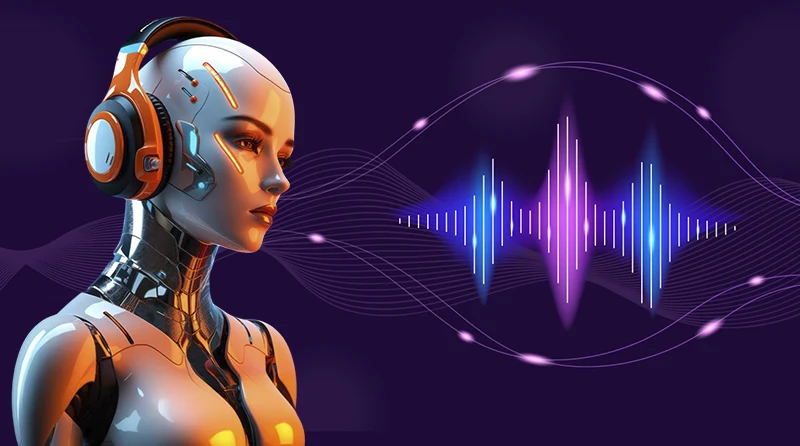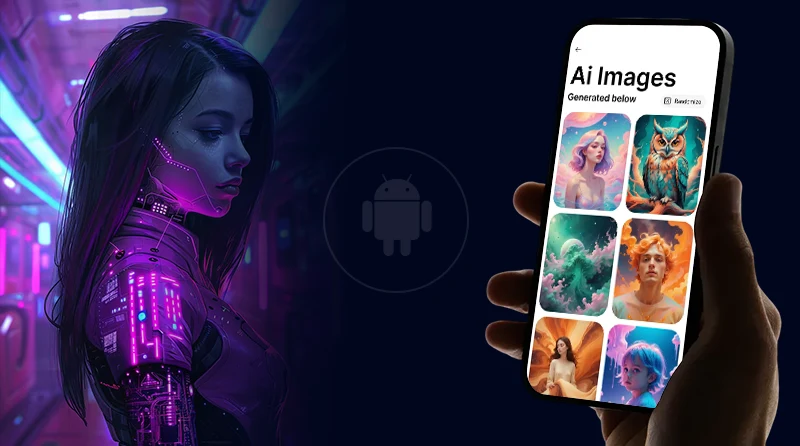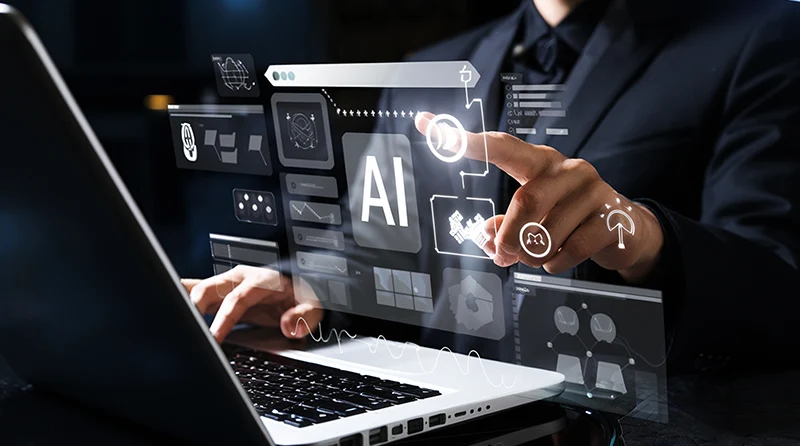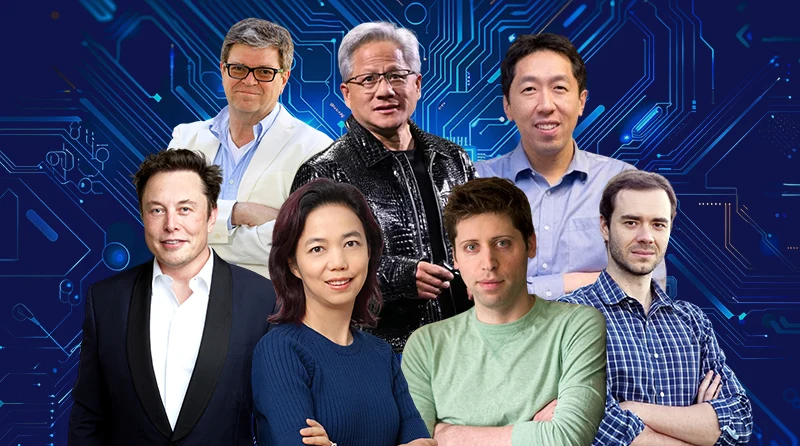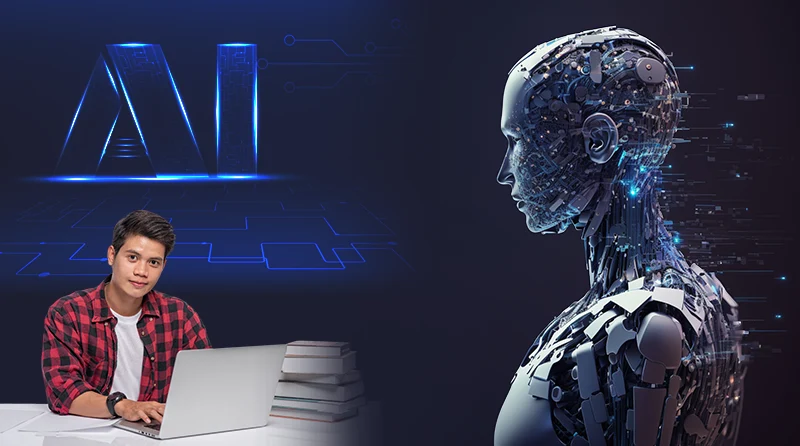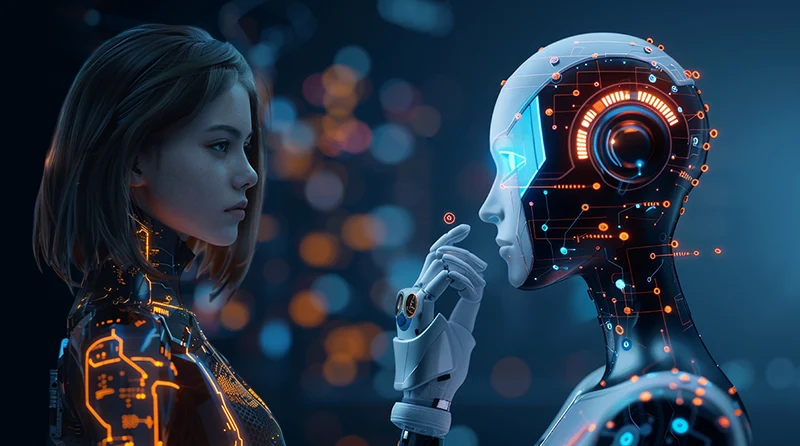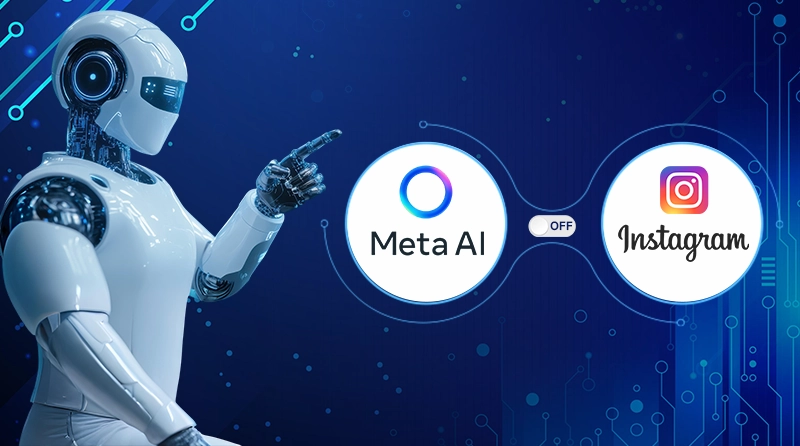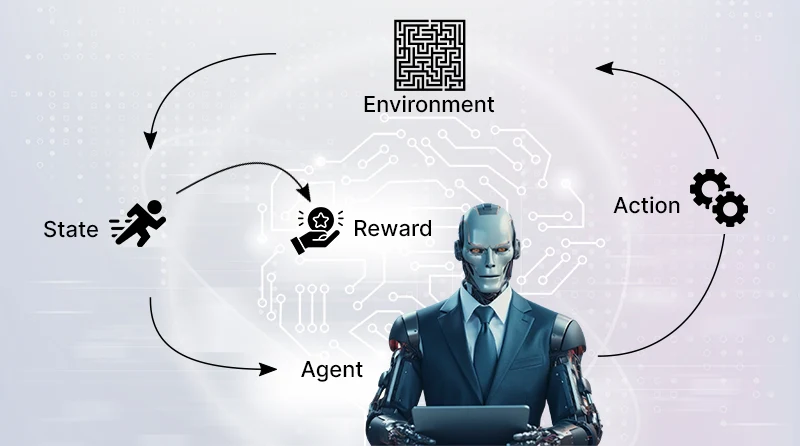How Does Generative AI Work?
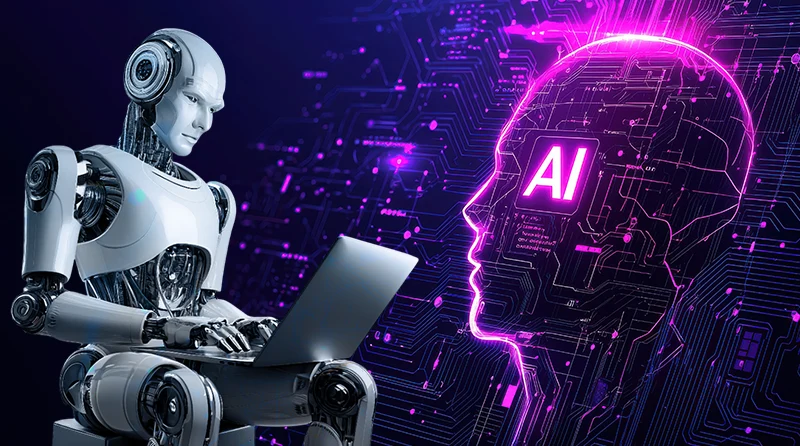
No matter if you are a student or a working professional, as long as you are someone who relies on the internet at some point in your everyday schedule, you must have used or at least heard the name ChatGPT. This is a brilliant tool that just requires a few words as input to generate an excellent response. You can ask questions, generate emails, create images, analyze data, perform mathematical tasks, write codes, and much more just by providing the right commands. But, what is the technology that brings tools like ChatGPT, Perplexity, and Gemini to life? Well, that is the technology popular with the name “Generative AI”. So, how does Generative AI work?
Let’s dig deeper into the technology and unfold the facts.
How Does Generative AI Work?
The working process of generative AI begins with data collection where the AI model gathers the datasets from the available resources. The performance of the generative AI model is entirely dependent on the quality and quantity of data. So, the better the data, the more efficient will be the outcomes. The datasets consist of texts, images, voices, languages, and much more.
Generative AI uses various techniques like neural network and deep learning algorithms that helps to identify particular patterns and thus generate new content accordingly. The complete working mechanism of generative AI is dependent on the training process of the generative AI model. Once the digital solution is trained on the high-quality data, it focuses on understanding the relation between input command and existing data. The software then generates the new data by using probability and sampling techniques learned in the training process.
For example, if a generative AI model is trained with a huge dataset carrying pictures of trees, the model will be able to create new images of trees according to the prompt provided by the users.
What Exactly is Generative AI?

Generative AI is a deep learning model with the capability of generating high-quality images, customized texts, and a lot of other content according to the prompt provided by the user. You can take the example of ChatGPT to better understand the generative AI concept. The technology is trained on a particular dataset and carries an extensive capability of using that data to provide personalized responses to the users according to particular prompts. The input of a command, fetching the dataset, structuring the response, and providing the output is a long process that takes place within seconds.
Other than chatbot tools like GPT and Perplexity, you must have enjoyed that computer vision feature that can transform your selfie into Renaissance-style portraits and aged faces. The feature made a big buzz on social media at some point. That tool was also an application of generative AI which consumed images as the input and provided the filtered images as the output.
There are different components like foundation model, deep learning, fine-tuning, and reinforcement learning with human feedback which perform collaboratively to help generative AI solutions consume the knowledge and provide the output.
Examples of Generative AI
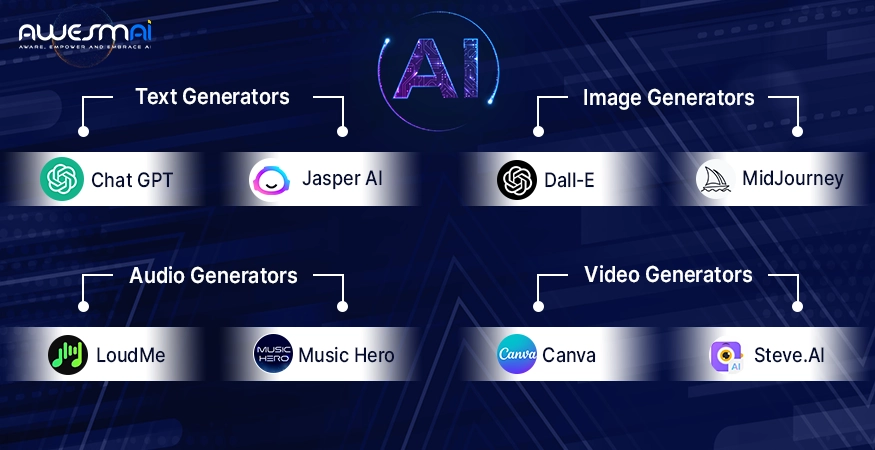
To better understand different types of generative AI, we can simply categorize them into the following four parts-
1. Text Generators
As the name suggests, the text generative AI solutions are designed to produce the results in the text format. It can be related to writing content, translating words, providing summaries, answering queries, and much more.
- ChatGPT – One of the most used text generator AI apps is ChatGPT which relies on a large language model to naturally engage in the language conversation. From creative content to answering questions in different tones, ChatGPT excels in everything.
- Jasper AI is another popular tool for generating texts such as articles, blog posts, marketing copies, and ad copies.
2. Image Generators
Image generation software is highly preferred by designers and creative professionals. The user can describe the image and the AI solution can create the relevant visuals within seconds.
- Dall-E is a part of ChatGPT that allows users to create high-quality AI images for their social media accounts, presentations, and more.
- MidJourney – This is another image generator tool that helps in creating realistic images from the provided descriptions.
3. Audio Generators
Audio generator tools are designed to create music samples and tones according to the prompt provided by the users. Musicians, cartoonists, and people in similar professions can use these tools.
- Music Hero – This is the generative AI model that can transform the hummed melodies according to the provided descriptions.
- LoudMe – LoudMe is a smart AI tool that enables users to use texts as input and generate music and even songs with no effort.
5. Video Generators
Video generator AI solutions are designed to help marketers and strategists transform text into visuals and long-form videos.
- Canva – This is a powerful tool that can generate videos from simple texts and help users to better portray their ideas and thoughts.
- Steve.AI – It is a patented AI video generator where the users don’t need any skills to create high-quality customized videos.
You Might be interested in: 20 Best AI Apps for Android
What Kinds of Problems Can a Generative AI Model Solve?
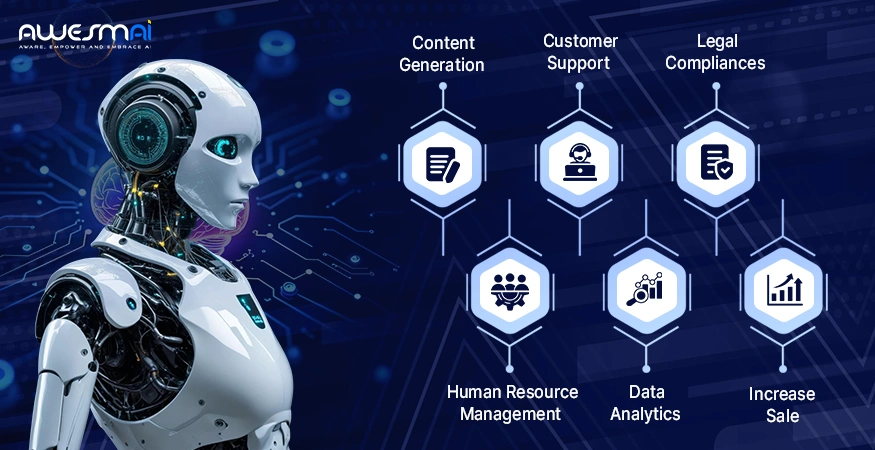
There are different types of problems and everyday requirements of businesses that can now be efficiently addressed with the help of generative AI models and applications. While most of them are now automated entirely, the rest need some strategic command to be completed within minutes. Following are some of the problems which can be mitigated by using the right generative AI model-
1. Content Generation
In order to maintain a strong market and online presence, it is important for businesses to provide relevant content for the target audience. However, getting the right content that resonates with the readers was never easy. At the same time, the instant need for the content often results in lost competitive advantages for the brands.
In such a situation, the generative AI models are nothing less than a miracle that can help brands produce a limitless amount of content within minutes while maintaining quality and versatility. Just the right command and AI models can create customized, engaging, and different types of content. Whether it is writing new blogs for the website or generating social media campaigns, the right prompt can generate the content to synchronize the business tone and theme.
2. Customer Support
Customer support has always been playing a vital role in increasing the brand loyalty. However, it is never easy to be instantly available to customers, understand their queries, and provide the right solution manually. Generative AI, on the other hand, has proved to be more efficient than human customer support agents it can easily provide the precise and right answers to the customers’ queries in no time.
AI customer support agents are trained on the datasets that allow the solution to fetch relevant keywords, understand the queries, and offer solutions. Moreover, it becomes easy for the businesses to provide the consistent and around-the-clock customer to their stakeholders. The performance of AI-powered chatbots even increases with time. Simple tasks like voice generation, password change, shipment tracking, and much more can also be performed solely by generative AI solutions.
3. Legal Compliances
Irrespective of the industry and country, it is important for businesses to comply with defined rules and regulations. Thus generative AI can play a significant role in the legal compliance of businesses with its use cases like legal research, formulating legal documents, scrutinizing case law, and helping legal teams to automate time-consuming manual tasks.
For example, it becomes much easier for the legal team of businesses to analyze long contracts within minutes, identify the errors, and make the required corrections. This use case can help a law consultant wrap the entire day’s task within minutes and improve overall productivity. At the same time, the right generative AI tool also guides the organization toward the basic laws and rules associated with the operations.
4. Human Resource Management
As the company grows, the human resource also increases and so does the need to manage them. HR operations can be efficiently streamlined with the help of generative AI solutions as its machine learning and natural language processing capabilities can automate the various repetitive tasks of invoice generation, mail shooting, and answering employees’ queries. At the same time, generative AI also helps to deploy a virtual HR assistant that can provide real-time assistance to employees regarding their non-complex queries.
Generative AI tools can be customized according to particular business needs. Also, it is very easy to control the data access for these AI models which ensures that any confidential data is not being shared with the digital solution, eliminating the chances of data breach and hacking.
5. Data Analytics
It has always been a challenging task for businesses to extract actionable insights from their data and make smart decisions. Hiring a data analyst is also not a feasible option for startups and small businesses as it requires huge costs and time. Generative AI tools have the extensive capability of data analysis where they can identify the hidden patterns in the data to generate actionable insights.
Whether it is predicting the market demand for a particular product or recommending the right stock level to avoid the chances of outstocks or overstocking, generative AI solutions have been proven to be effective in numerous situations. Similarly, generative AI tools can analyze the customer response from diverse social media channels to understand the emotions of customers regarding the product or service. This can help to make the required improvements.
6. Increase Sale
Gone are the days when businesses used to make hundreds and thousands of cold calls to increase their revenue. Generative AI solutions are more creative and effective in increasing sales. For example, intelligent software helps to curate product description that aligns with the personalized needs of the customers. Thus, the need for unnecessary marketing and pitching can be eliminated.
Similarly, generative AI helps in price optimization which ensures that you are offering a product at competitive pricing without compromising with the profit margins. So, it creates a win-win situation for the customers as well as business owners. Curating personalized marketing campaigns, offering product recommendations, using customer data to provide a better experience, and reminding customers about their abandoned carts are some other strategies that help to increase sales.
What is the key feature of generative AI?
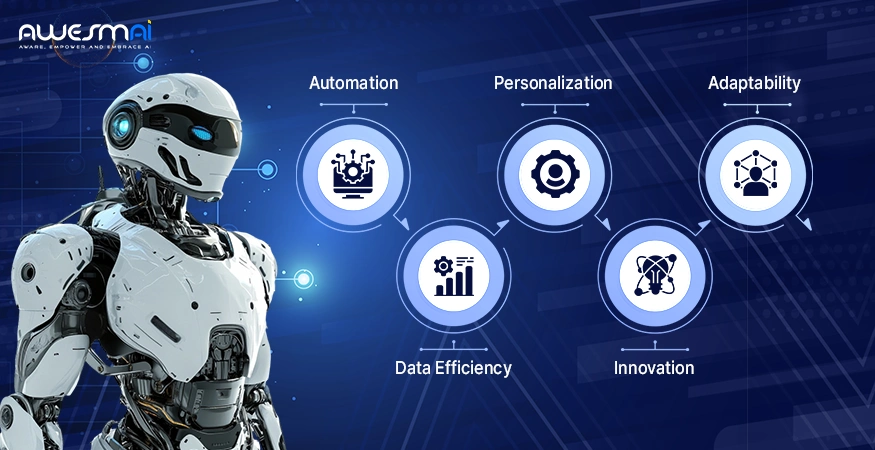
Features are the backbone of any solution which makes it different from the existing solutions and attracts the target audience. As generative AI is expected to automate repetitive tasks and increase the workflow, here are the key features that help generative AI perform the tasks-
1. Automation
Undoubtedly, automation is the very first feature of generative AI which makes it different and more advanced than any of its counterparts. The efficient use of generative AI helps people in diverse industries to increase their productivity by deploying smart solutions to perform repetitive tasks. Whether it is entering the data, creating images, or writing the content, the automation feature of generative AI helps to complete long tasks within minutes.
2. Data Efficiency
Generative AI solutions are trained on huge datasets and thus they have the exceptional capability of handling data. So, even if the user doesn’t have enough data to feed the AI model, it never affects the generative capability of the solution. One can always produce high-quality outputs with limited information.
3. Personalization
Generative AI is used by businesses for their marketing and sales strategies. So, personalization is another feature that allows the users to curate the AI content which is customized according to particular brand image and target audience.
4. Innovation
While the generative AI model is trained on existing data, it carries the capability to produce new and innovative ideas. Whether it generating content ideas or effective social media strategies, you can feed your preferences and a generative AI solution will produce the results accordingly.
5. Adaptability
This is one of the best features that users can leverage with generative AI models. The intelligent system is capable of adapting to the changing business requirements and users’ expectations to produce the best quality content. At the same time, generative AI software doesn’t even rely entirely on manual updates to grab new information and learn new things.
What are the Benefits of Generative AI?
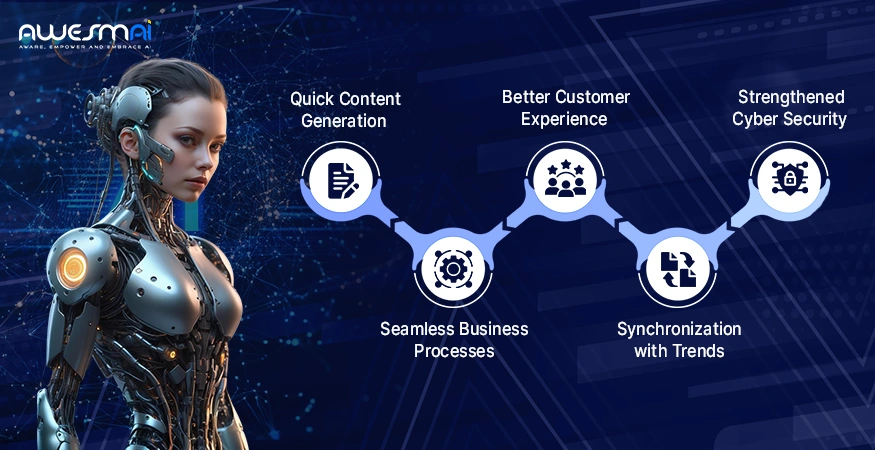
Generative AI has been providing a range of benefits for businesses while saving costs and increasing overall efficiencies. Let’s explore some of the biggest benefits of generative AI solutions-
1. Quick Content Generation
Generative AI solutions have been proven to be an effective medium of generative high-quality and instant content. For example, the marketing team can use tools like ChatGPT, Perplexity, and Gemini to produce SEO-friendly content while ensuring the right keyword placements. Similarly, it becomes highly easier to create engaging captions for different social media channels like LinkedIn, Instagram, and Twitter.
2. Better Customer Experience
AI generative models can be integrated into the chatbot which helps to provide instant responses to customer queries. At the same time, generative AI chatbots can work around the clock while enhancing the quality of responses with each interaction. Similarly, eCommerce businesses can use the data analysis feature of customer demographics to create personalized ad campaigns. It helps to foster personalized customer experience.
3. Strengthened Cyber Security
Generative AI adds an extra layer of security for businesses. The technology is helpful in identifying the anomalies and unusual patterns in the system, identifying the chances of threats, making informed decisions, and informing the relevant authorities instantly. The rapid detection of cyber security threats helps in eliminating the chances of big data losses and thus increases the reliability of users on the company.
4. Seamless Business Processes
Task automation helps to streamline the various business processes to a significant extent. From reducing the workload of employees to performing repetitive tasks with increased speed and accuracy, generative AI has emerged to be a great companion for everyone. For example, it can analyze the reports, extract actionable insights, and help the relevant stakeholders to make data-driven decisions.
5. Synchronization with Trends
It becomes extremely easy for businesses to synchronize their offerings according to the latest trends in the market. A generative AI system helps to track and analyze the users’ preferences and thus steers the product and service design accordingly. For example, an apparel brand can analyze complex data about users’ preferences to easily identify the best t-shirt designs and manage production accordingly.
Types of Generative AI Models
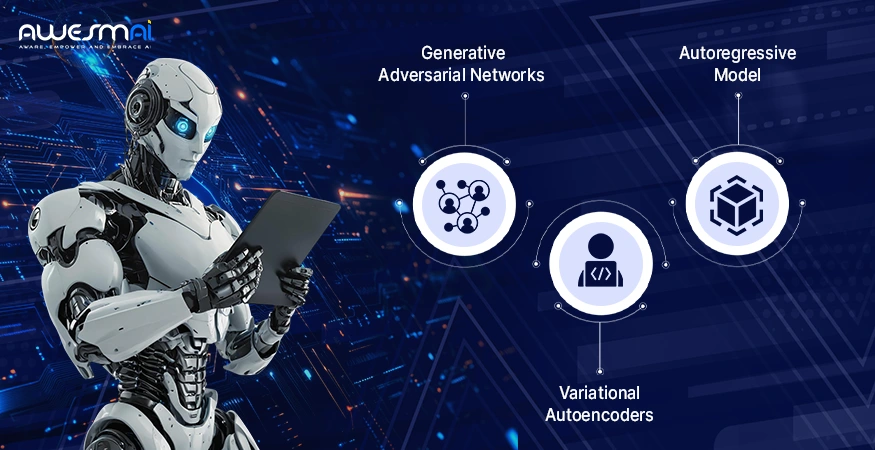
Different types of generative AI models are being used by numerous businesses according to their particular use cases. Here are the core types of generative AI models that are hugely used by global businesses-
1. Generative Adversarial Networks
These are the generative AI models that carry two different neural networks including a generator and a discriminator. The generator is responsible for creating the new data that is used to build the customized response according to the particular query of the user. Discriminator, on the other hand, is responsible for checking if the data is real or generated.
2. Variational Autoencoders
This is another generative AI model that uses the encoder and decoder network. The encoder compresses all the data in a compact space for the better representation. On the other hand, the decoder then reconstructs the data into the latest representation. The variational autoencoder models are mostly used for generating highly realistic images and visuals.
3. Autoregressive Model
This is one of the best models that is used to create generative AI solutions, majorly focusing on content generation. There is a simple working mechanism for autoregressive models as it generates one element at a time and thus uses the existing element to suggest the next element. So, tasks like text generation are more efficiently performed with the help of generative solutions.
Applications of Generative AI
Generative AI has demonstrated exceptional application in diverse industries while streamlining processes, minimizing manual efforts, and increasing productivity. Here are the numerous applications of generative AI in diverse industry bases-
1. Entertainment
Generative AI is being highly used in the entertainment industry where it can be employed to create new music as well as remix the existing ones. Similarly, tasks like video editing can also be streamlined by using special effects and filters.
2. Finance and Banking
The new intelligent solutions have come a long way in making their place in this security-prioritizing industry. From real-time fraud detection to providing a personalized experience to high-value clients, the FinTech industry is deploying AI solutions in their different operational aspects. For example, generative AI solutions can optimize market risk by analyzing the patterns.
3. Healthcare
Diseases like cancer, neurological disorders, and heart diseases can be detected in the early stage using generative AI as it helps to analyze X-rays, MRIs, and CT scans. Using NLP, the solution delves into the unstructured data to extract insightful information to help physicians provide better patient care.
4. Manufacturing
Manufacturing is one of the industries that leverages the most applications of generative AI to manage tasks and boost efficiency. Whether it is predicting the market demand to determine the stock level or identifying the potential errors with the machines for early maintenance, generative AI systems help to save huge costs in manufacturing businesses.
5. Real Estate
There are numerous use cases like property valuation, property search, pricing optimization, predictive maintenance, floor plan generation, virtual designing, renovation simulation, property image enhancement, etc. that make generative AI solutions an integral part of the real estate industry.
6. Supply Chain
Industry 4.0 technologies are being widely used by the supply chain industry for sustainability, reducing carbon footprints, demand forecasting, route optimization, supplier selection, inventory optimization, and risk assessment practices.
7. eCommerce
Generative AI applications can help with providing a personalized shopping experience to users by identifying their preferences and suggesting relevant products. At the same time, analyzing the market demands can help business owners to manage their stocks accordingly.
8. Education
The EdTech sector has been leveraging the generative AI benefits for providing personalized learning content, automating grading, intelligent tutoring, creating content and curriculum designs, etc. Thus, it fosters a seamless and mobile interaction system between the learners and tutors, making the education more fun.
How does the future of Generative AI look?
Generative AI has brought us a lot of innovation and has become an integral part of our personal as well as professional life. However, the transformation of this technology is not over yet and there are many amazing things to be witnessed in the future.
- Generative AI solutions are expected to be more versatile in handling multiple modalities simultaneously.
- The domain-specific generative AI models can come into existence which will focus on the workflow of a particular business domain.
- Better options for customization can be witnessed that will allow more tailored and personalized experiences.
- The enhanced integration capabilities of the solution will make generative AI solutions more compatible and powerful.
Conclusion
Generative AI has been a buzzword in all industries and professions due to its capability to perform multiple tasks seamlessly, reduce human efforts, and maximize accuracy. However, all these core competencies exist only because of the working mechanism of generative AI models. The solutions majorly depend on the range of technologies like deep learning, machine learning models, and natural language processing that help to identify patterns and execute the outcomes accordingly.
Frequently Asked Questions (FAQs)
How can generative AI be used in cybersecurity?
Answer- Generative AI can be integrated into the existing technological infrastructure of companies where it can identify the anomalies in the system and take informed actions. At the same time, it also informs the relevant authorities instantly to avoid the chances of bigger losses.
How do you build a generative AI model?
Answer- You can build a generative AI model by following the steps defined below-
- Begin with defining the problem and product objectives.
- Data collection and management for training purposes.
- Data processing and labeling to enhance data quality.
- Choosing the right foundational model according to the defined scope.
- Fine-tuning and RAG to enhance the model capabilities.
- Model evaluation and refinement to analyze performance and make required improvements.
- Deployment to the existing system.
What is generative AI and how does it work?
Answer- Generative AI is the smart solution trained on huge datasets that take prompts as input data and generate texts, images, voices, and videos. These solutions rely on different types of technologies like machine learning, natural language processing, and deep learning to analyze the existing data and generate the results using that data.



